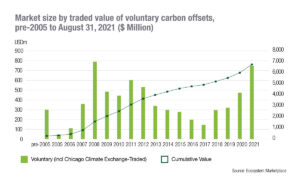Trade Carbon Credit Futures
Carbon credit futures are a type of derivative that enables investors to gain exposure to the carbon market. They are a relatively new form of investment, which has only recently become available to the general public. While there are a few different ways to invest in carbon credits, the easiest way is through carbon-credit exchange-traded funds. These specialized funds purchase a diverse array of contracts to track an index.
trade carbon credits are a legal means of offsetting greenhouse gas emissions. This allows companies to take responsibility for their impact on the environment. By purchasing allowances to emit one tonne of carbon dioxide, companies can reduce their emissions and help fight climate change. They can also sell excess allowances to other companies on the market.

As more people begin to realize the serious implications of climate change, companies have turned to voluntary markets for carbon offsets. The voluntary system allows companies to reduce their impacts without having to pay a penalty. However, there are many questions about the effectiveness of these market systems, as well as the level of volatility in the prices. There are many ways to invest in carbon futures, but it’s important to understand how they work and how to use them effectively.
How to Trade Carbon Credit Futures
Carbon credits are a type of asset that is regulated by governmental organizations. The European Union, for example, uses a cap-and-trade market to control the production of greenhouse gases. This approach is generally used in other parts of the world. The price of allowances is determined by the rules of supply and demand. If there isn’t sufficient demand for a particular commodity, the market price is set lower. This helps to stabilize the value of the underlying asset.
Carbon offsets can be voluntary or mandated. Both have advantages and disadvantages. The voluntary market has limited liquidity and requires a large amount of time and resources to find a supplier and buyer. Some companies are years away from having significant emission reductions. This could make the voluntary market less attractive to some buyers.
For example, a company with 100,000 tons of emissions might decide that it is uneconomical to install a new machine. They may then opt to buy carbon credits from the open market. Alternatively, a group of companies that have collectively reduced emissions can offer to offset a portion of the factory’s emissions through a project in another country.
Although the market has only been around for about twenty-five years, it has grown to include several countries and is expected to grow even more. It is estimated that the global market will reach $50 billion by 2030, according to the Taskforce on Scaling Voluntary Carbon Markets. This could encourage more groups to engage in environmentally friendly activities.
The iPath Series B Carbon ETN and the KraneShares Global Carbon ETF are two popular ways to trade carbon futures. These exchange-traded funds track the performance of the carbon market and are available through brokerage accounts or through popular investment apps.